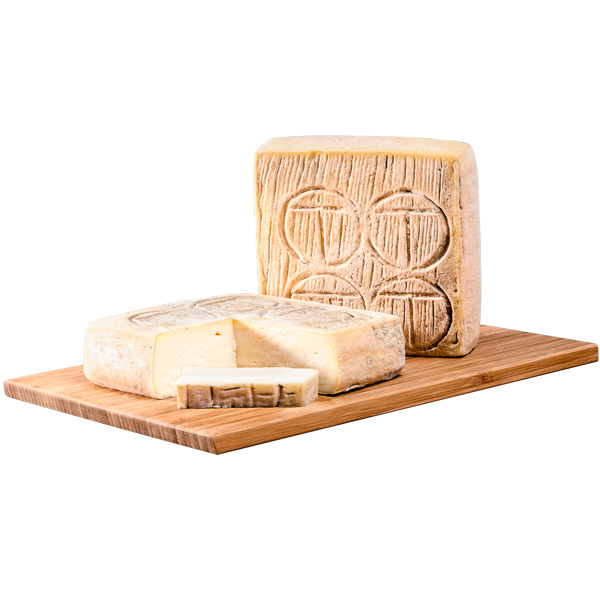History
Taleggio is a cheese that has been around a very long time, since the 10th century. Documents dating back to 1200 refer to business transactions and exchanges involving this cheese, as well as others. It originates in Val Taleggio, which gives to the cheese its name, in the province of Bergamo.
With its consumption ever on the rise, the production of the cheese has extended to the Padanese lowlands. Here, many cheese factories have opened up, mainly of small or medium size that have struck a balance between traditional production technology, which has mainly stayed the same, and technological innovations that have developed over the course of nearly a thousand years.
The origin area comprises, in Lombardy, the provinces of Bergamo, Brescia, Como, Cremona, Lecco, Lodi, Milan and Pavia. In Piedmont, the origin area comprises Novara; in Veneto, the province of Treviso.
Characteristics
Every Taleggio cheese weighs from 1.7 to 2.2 kg, depending on how it is produced. The cheeses are parallelepiped and oblong in shape, with sides of 18 to 20 cms and a flat base of 4 to 7 cms. The rind is thin, with a soft consistency and naturally pink in colour. It has a typically grey and green/ light sage coloured mildew.
The dough is uniform and compact, and is softer beneath the rind and at the end of maturation. The centre of the cheese is more crumbly. The colour varies from white to straw-coloured, with a few small marks.
The taste is sweet, with a slightly acidic, lightly fragrant taste – sometimes with an aftertaste of truffles.
Storage
Taleggio keeps best about two weeks in fridge, at a temperature of 20c to 60c depending on the stage of maturation; it’s best to keep it wrapped in a damp cloth to maintain the softness of the rind. It’s important that the wrap allows the cheese to breath, so don’t use cling film that stops the air circulating and causes fermentation.
Recipe
Ravioli with Taleggio PDO, pan fried with butter and marjoram
Ingredients for 4 people:
• 500 grams of Taleggio PDO, 7 dl milk, salt and pepper.
• 300 grams Parmigiano Reggiano (Parmesan) PDO.
• 300 grams fresh butter
• 300 grams fresh egg pasta
• 2 leaves of fish gelatine
• 30 grams marjoram
Preparation:
Clean the Taleggio and cut it into small pieces, then melt it in the milk. Soften the fish gelatine in cold water and add it to the milk. Then heat in a pan until it melts. Sprinkle with salt and pepper. Put the milk mixture in the fridge and leave it to stand for two hours. Stretch out the pasta quite finely, and then cut into
squares of 14 cm a side. Add a spoonful of the milk mixture in the centre of each pasta shape and close up into triangles. Cook the ravioli for a few minutes in water. In the meantime, melt the butter and flavour with the marjoram. Drain the ravioli and place on a serving dish. Sprinkle with Parmigiano Reggiano PDO and the melted butter. You may also add dried fruits like walnuts or almonds to add a crunchy texture to the dish.









